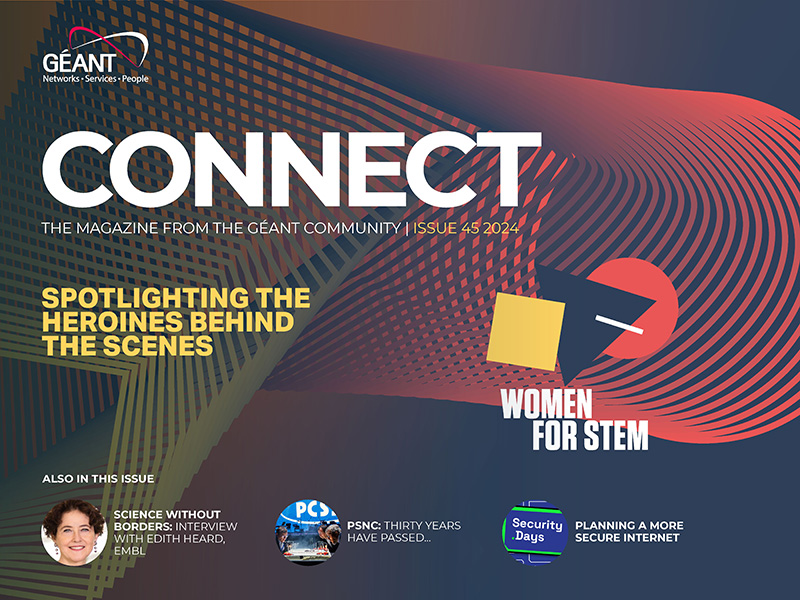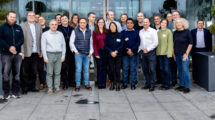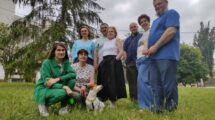Words: Cezary Mazurek, Maciej Stroiński, PSNC
For thirty years now, we have been collaborating with research institutions to explore new areas of scientific challenges in joint projects, but also with business partners – both those just starting out in the market and large companies – who see our competence and experience as a strong asset for the development of competitive innovation.
PSNC provides access to world-class e-Infrastructure for the scientific community, thus creating a specific research and development environment – DIGITAL SCIENCE – for proof-of-concept, prototyping and large-scale pilot projects. The second branch of our activity is DIGITAL ECONOMY that is oriented to the creation of innovations based on information and communication technologies (ICT). An equally important element is our mission activity in the context of SOCIAL INNOVATION by spreading knowledge and awareness of modern technological opportunities among various social groups, as well as actively fighting the problem of digital exclusion.

How did it all start?
In April 1993, the College of Rectors of the City of Poznań designates the Institute of Bioorganic Chemistry of the Polish Academy of Sciences as the Leading Unit for the metropolitan academic network (MAN) and supercomputers (HPC center). The Poznan Supercomputing and Networking Center was established at the Institute to carry out this task as of 1 November 1993. At that time, the Center’s staff consisted of 6 people: Prof. Jan Węglarz as a scientific supervisor, Dr. Maciej Stroinski as a technical manager, and three young graduate students: Artur Binczewski, Cezary Mazurek, and Norbert Meyer as those responsible for network development, services and data processing, respectively, as well as Elżbieta Łobaza, who was responsible for administrative support.
Thirty years have passed. Five of those six people are still working at the PSNC today, and its current staff numbers more than 500 employees. Over the years, we have completed 344 international projects. In the Horizon Europe/Digital Europe program, which has been running for three years, we have already obtained 30 projects. Of all these project activities, we have coordinated as many as 26. A distinguishing feature of PSNC’s activities is also the wide range of various financial instruments to which we successfully apply. Programs such as eContent+, Active Assisted Living, Erasmus, Norwegian Funds, COST and many others represent a total of 44 projects evaluated and implemented according to various criteria and rules.

Three decades of the PSNC
Each of the three decades was crowned with a spectacular success that defined activities in the following years. The end of the first decade brought the establishment of the PIONIER national fiber-optic network and the PIONIER Consortium. The second decade witnessed the construction of the CBPIO laboratory complex (Research Center for the Polish Optical Internet) and Future ICT (Development of a competence center for next-generation networks and services). The third ends with the implementation of quantum computing and communications technologies and the launch of the Digital Airport laboratory.
The first years of operation were a time of fascination with the new development opportunities that emerged following the political changes in the early 1990s. The establishment of the Scientific Research Committee and its initiative to build the information infrastructure for science, and the lifting of COCOM (Coordinating Committee for Multilateral Export Control) restrictions allowed us to join the global development race and realize the dream of partnerships in Europe and the world. Bold decisions on the implementation of metropolitan networks in FDDI, ATM, Gigabit Ethernet technologies, as well as DWDM in the national network, coupled with the implementation of the paradigm of our own scientific fiber optics in metropolitan networks and in the national network, resulted in creating a unique system of information infrastructure for science links in Poland.
Users (universities, scientific institutes) connected to metropolitan computer networks and HPC centers, and the national fiber-optic network connecting this structure together, obtained a developmental impetus for the construction of campus networks and thus for providing researchers with access to the opportunities offered by the entire information infrastructure for science to support their work.
These activities are crowned by the creation of the program “PIONIER: Polish Optical Internet – Advanced Applications, Services and Technologies for the Information Society” (September 2000), the construction of the PIONIER network under this program and the formation of the PIONIER Consortium (2003). The continuation and development of these ideas today results in the 20th anniversary of this Consortium.
The second decade is a time of development of the information infrastructure for science. The period brings the first joint R&D projects with PSNC’s significant contribution (iTVP and Clusterix). Furthermore, PSNC defines and implements environmental programs for the development of services in the network (projects: FBC, KMD, PLATON, KMD2, MAN- -HA), as well as the expansion of 21 MANs and the PIONIER national network (projects: NewMAN, 100net). The final years of this decade are marked by the progressive digital revolution through the so-called Disruptive Technologies, which leads to the creation of a “digital vortex.”
All areas of academic, economic and social life are given a new dimension by integrating digital support processes into their field. For PSNC, this was an important signal of the need to expand the functionality of e-Infrastructure with new services, applications and algorithms for digital transformation processes. After all, if science is expected to creatively participate in these processes, it must have the appropriate tools and capabilities. In this spirit, the concept of building a complex of laboratories linked to the construction of the headquarters of the PSNC (CBPIO project – 2008 ), as well as science open to innovation (Future ICT project – 2013) is being developed. The decade ends with the launch of these projects and already in 2015, they are put into operation, and their mission begins.
The third decade saw the entry of the PSNC into the mainstream of digital transformation in a number of vital areas including digital humanities, personalized medicine, smart cities, smart agriculture, new media, quantum technologies, time and frequency metrology, or energy transformation with our participation in European nuclear fusion projects.
The establishment of a complex of digital transformation laboratories in the CBPIO and Future ICT projects influenced the formation of a unique communications and services ecosystem around MANs, HPCs and PIONIER networks. Many of these laboratories were transferred to the national dimension in the implementation of projects with PMIB: PIONIER–LAB, PRACE-LAB, PRACE-LAB2, KMD, DARIAH-PL, led by PSNC, as well as five PMIB projects: EuroHPC PL and 5G-PL, NEBI, MOSAIC, NLPQT, in which PSNC actively participated.
The end of the third decade is an opening for new technologies that have the potential to revolutionize global digital transformation. These are the technologies of quantum communication and processing and autonomous machines, which, in conjunction with artificial intelligence and digital twins, will provide the impetus and set the R&D directions for the fourth decade. We are entering it with the PIONIER-Q network, the Center for Quantum Processing and the Digital Airport.
A development phenomenon of three decades
Every achievement of the decade is developed in the consecutive years. And the final years of a decade bring some anxiety and search for new development impulses. This is a good model of development by continuity.
An essential element of this model is people. Their intelligence and enthusiasm make it possible to take on any job and face any challenge. This is accompanied by a genuine passion for finding the best solutions and boldly implementing them.
Undertaking innovative development theses is always fraught with risk. At PSNC, this risk has been minimized through extensive use of proof-of-concept approaches. A general reflection inspired by the 30th anniversary of the PSNC and many other Leading Entities, as well as the 20th anniversary of the PIONIER Consortium, is the observation that in the beginning, the information infrastructure for science was perceived as an “add-on to science.” Today, the infrastructure is at the center of science, and access to it is a prerequisite for cognitive and scientific processes. One can even say that it is a catalyst for the processes undertaken to solve the great challenges of humanity in the 21st century.


Read or download the full magazine here







